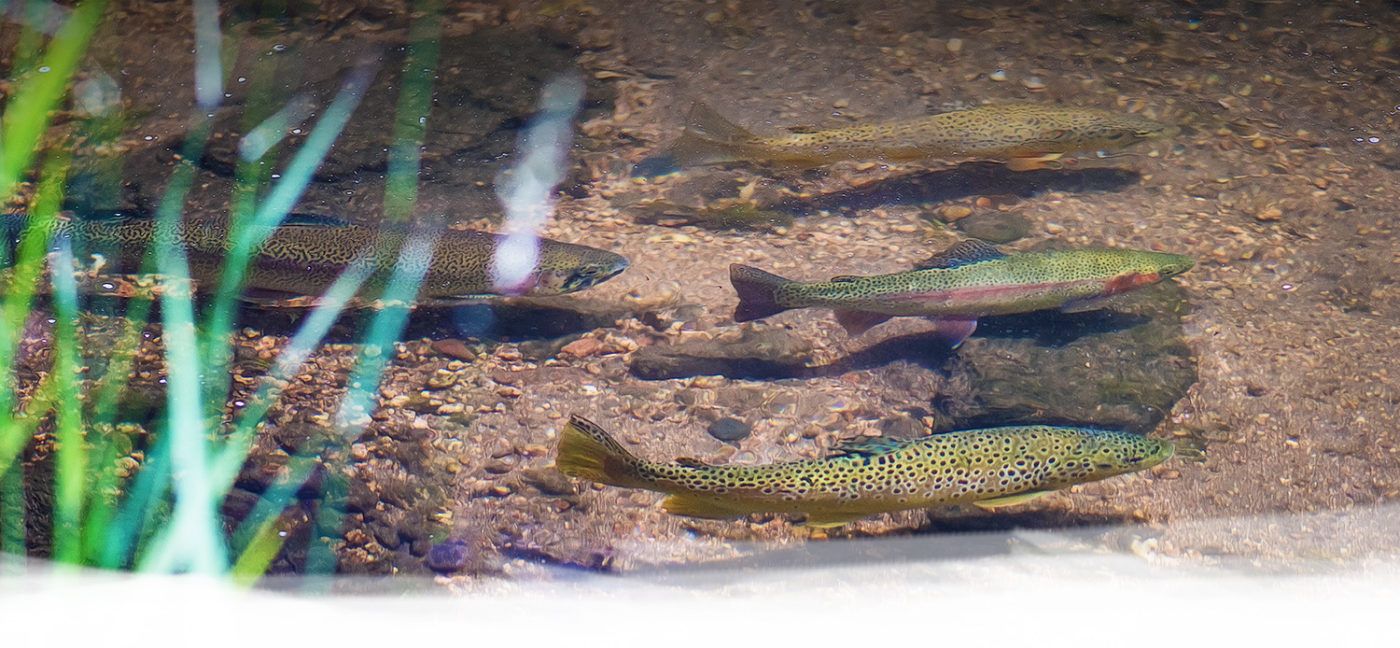
Mindful Steps
Learning to identify and take care of redds and spawning fish is thankfully pretty simple. The realization is much like first finding out about the birds and the bees. Once you’re in the know, it’s all seems pretty natural.
Watching movies such as Bambi and observing birds in backyards teach most of us, from a young age, to leave nesting birds and their eggs alone. Fish nests, on the other hand (and underwater), are a bit more out of sight, out of mind.
Follow the bird nest analogy a step further. Tucked into bushes or high in the branches of a tree, birds’ nests are generally less vulnerable to unintended human impact. Conversely, fish redds (particularly those built by trout & salmon) are positioned in shallow, gravel-bottomed areas of rivers and streams. Turns out, these areas tend to be the easiest, and therefore most likely, place for uninformed anglers to wade and cross.
An understandable lack of awareness, coupled with a vulnerable position can lead to dire consequences for wild fish nests: unborn eggs or first born alevins can be crushed by the uninformed wading angler or stream goer.
With some simple steps we can mitigate unwanted impact to wild fish reproduction.
STEP 1: LEARN TO IDENTIFY REDDS AND AVOID WALKING THROUGH THEM
Though the exact shape and location can vary depending upon the species and situation, a redd can be identified by its scoured circular or oval depression and mound pattern in the gravel. Generally, these gravel nests are located in a foot or few of water, amid a steady flow of current. These rubbed out areas will be clearer and brighter than the surrounding riverbed. To prepare her redd, the female rotates sideways and uses the width of her writhing body and tail, over and over again, to scour away unwanted silt and debris that would prevent her eggs from accessing oxygen. This act creates a polished area (nest) in which to deposit her eggs. The more silted and weedy the river bottom, the more distinctive the redds will be. Clean gravel bottom rivers can make redd identification less obvious. The use of polarized fishing glasses will greatly aid in your attempt to spot redds.

A female Atlantic salmon prepares her redd.
Photo: NESS DISTRICT SALMON FISHERY BOARD
Spawning seasons of fish species vary, but they happen generally consistent year to year along a given watershed. As an example, brown trout and brook trout spawn in the fall, whereas rainbows and cutthroats spawn in the spring. Factors such as location, elevation, temperature, flow, and more will dictate the specific timing within those seasons. It’s also important to remember that even after fish have spawned and left the redd, the eggs or alevins are still present and hiding amid the gravel – sometimes for as long as 130 days or more. Choosing to avoid walking in areas with redds is the easiest way to #mindtheredd.
Stay tuned to the Mindtheredd blog for species and season specific information and suggestions from expert guests.
STEP 2: LEAVE SPAWNING FISH BE
As natural predators, self-imposed restraint is a very unnatural thing. After all, we are predators by nature. Regardless of whether we are harvesting fish or practicing catch & release, we are genetically programmed to: SEE FISH. CATCH FISH.

The most natural way to mind the redd… photo: Angler’s Alibi
So why pause and reconsider the cast?
While fish are actively spawning, they are at their most vulnerable. They are often more exposed to would-be predators, while simultaneously burning energy to make more fish. The females spend extra energy while working to build and protect the nests, while the males are burning calories battling one another for the chance to fertilize the eggs. These fish will often take a fly, lure, or bait simply to protect the nest or defend their right to the territory, not because they are feeding.
The premise that angling is an attempt to trick hungry or predatory fish into eating something on a hook does not fit the situation described above. Although we love catching fish as much as anyone, Mindtheredd suggests that anglers leave actively spawning fish be. This will not only reduce stress and mortality rates on individual fish, but help to ensure the health of the fishery for generations yet unborn. Put simply, it’s about taking care of them while they take care of business.
Fish species in different regions around the world spawn at different times. Appropriate local customs and regulations vary. Rather than create an arbitrary set of rules for each species or situation, Mindtheredd suggests instead that anglers familiarize themselves with regulations and local customs first and foremost. Then, consider the unique angling situation beyond the regulation and make mindful determinations about when and where to hold a cast.
Video by Paul Gaskell on Vimeo.

